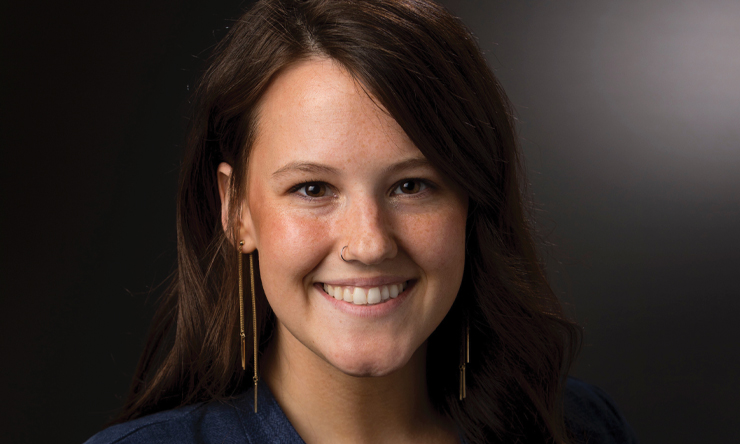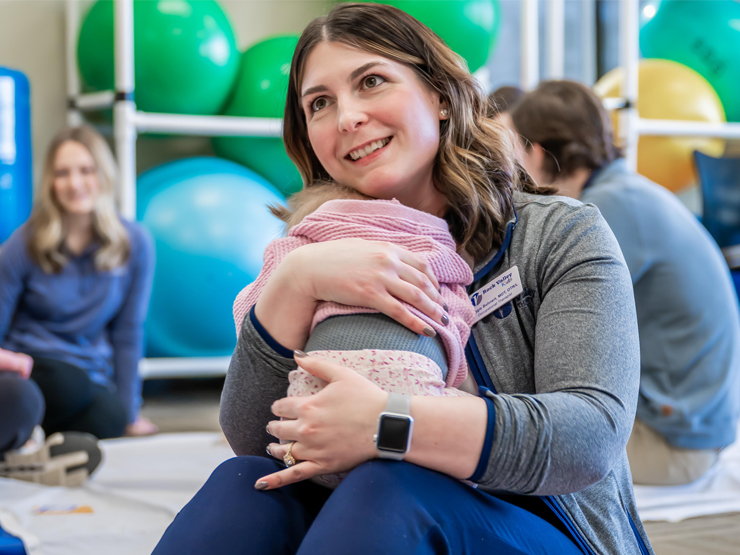Scene Magazine | Summer 2007
by Bea Jacobson, PhD
So, it's almost 8 a.m., and all but Emily have made it to the Cuenca bus station. Berenice tells me that our bus is leaving, so she'll take our group to board the bus, and I'll watch for Emily. I walk swiftly through the crowded station, dodging vendors and ayudantes till I finally spot Emily. Together, we hustle toward the gate, only to see our bus already moving toward the exit. And so we run. Our group spots us and starts waving from the bus windows and urging the driver to stop. Winded, we climb aboard and fall into our seats. Our trip to Principal has begun.
We drive north, and the bustling city streets disappear, replaced by forests of eucalyptus, spunky agaves, sheep, rivers, blue sky, and mountains without end. After a short layover in Chordeleg, we board an ancient bus for the bone-shaking ride to Principal. We sway with every turn and bounce over every hueco. Winding around mountains and down valleys, we finally arrive at a village so small that a public address system serves in place of a radio station. We quickly stow our bags in the tiny hostel, and Matt Thompson, the Peace Corps volunteer who coordinates with our group, hands us our tools: hoes, pick axes, shovels and a couple of serious machetes. We then follow him up the steep slope, greeting everyone we pass, campesino-style, learning at the top that some of us will carve steps out of the stony hill we just ascended to provide easier access from the road. Others will work with the townspeople, mostly women-since so many of the men have migrated to the United States or Spain to earn money for their families-creating terraces for a greenhouse that will show tourists, who currently come in small trickles, how straw, or paja, grows. Principal is known for its straw weaving, especially its Panama hats, woven from straw from the coast. The greenhouse will let visitors see the straw actually growing, before it is harvested and processed to be woven into hats, mats, boxes, coasters-even beverage can koozies. By attracting tourists and promoting sales of their straw products, the townspeople hope to make migration unnecessary.
On the hillside, it's very sunny, and soon very hot, and at an altitude of 9,000 feet, before long we're gasping. But slowly we get into the swing of a day of manual labor-we pace ourselves as we swing pick axes, side by side with local women who, despite their age and small stature, get more out of every swing of the axe than we gringos do. A few sheep look on as they laze, tethered, under a capulies tree. I realize that our water supply is running low, so I hike down the slope and into town, buy every water bottle in a tiny tienda, and haul them up to the work site. By lunchtime, we're ready for a break. While we worked, another team of women cooked lunch for us, a feast of rich corn and bean soup, the hugest kettle of rice in all the Andes, vegetables, chicken, and-in our honor-guinea pig.
There's a short siesta after lunch, and while relaxing and re-lathering ourselves with sun block, we marvel at the hospitality. We've become part of a minga, a work crew made up of town residents sharing in a community project not unlike an Amish barn-raising, but Andean-style. The last two hours of the workday, from 3 to 5, are the hardest: We're really weary. I loan out gloves to students who have developed blisters, and make another hike into town for water. Yet the women of Principal are as energetic as they were at 10 in the morning. Terry and Sandy encourage the students through the final stretch of terracing. At the end of the day, we return our tools to their owners; and then, with easy, Andean graciousness, the indefatigable women serve us lemon balm tea and humitas-sweet corn tamales-real comfort food.
Back at the hostel, we're able to look up the mountain and spot our work. The rich brown dirt of our terraces stands out on the huge green slope-a symbol of our hard work and a promise of the greenhouse to come. But some of the students have discovered new energy, so off we go to the town square for two hours of pick-up soccer. Mostly the SAU students and faculty play, but Matt joins in, along with several of the locals. Other Principaleños line the square, eager to see just what sort of soccer talent these gringos might have.
The next day, some of us hike to a waterfall, or visit the school, or talk with the doctor who commutes out to Principal once or twice a week. We also visit the women straw weavers, learning more about their craft and their organization's efforts to improve sales while ensuring just prices for their work. Their simple, traditional clothing and unsophisticated manner belie their awareness of economics, both local and global. Though remote from the world by our way of thinking, the Principaleños are well aware of the economic pressures from the cities and from other countries. Their concern about the plight of their little town in an era of globalization has led them to travel to participate in demonstrations and to stage protests resisting companies that try to exploit the natural resources of their region.
Too soon, we're boarding our bus. Riding back to Cuenca, a student asks if I could take photos of the progress made on the greenhouse when I return next summer. Despite sore muscles, the students take pride in what they've accomplished with the women of Principal. Yet there's so much more to be done, and not just in terms of the greenhouse. We've witnessed the stress that migration places on families, the frustration of scant provisions, the difficult access to education and medical care. But we've also seen something else. However challenged by the world they live in, the people of Principal evince a real strength-physical, social and spiritual-a strength that ironically has empowered and inspired us.
News
Share This Story



